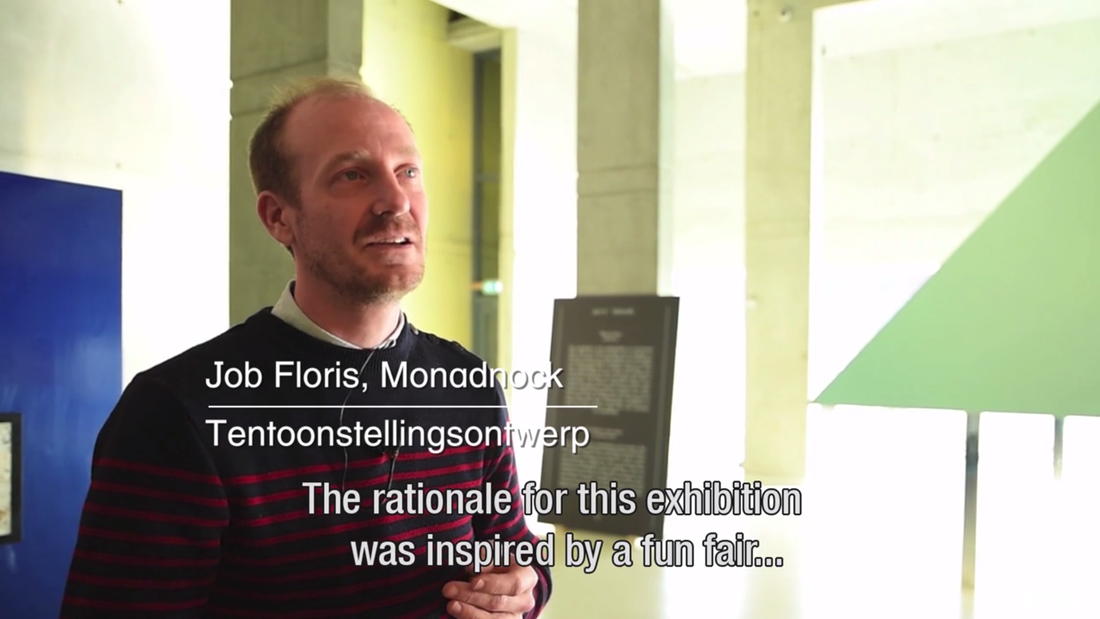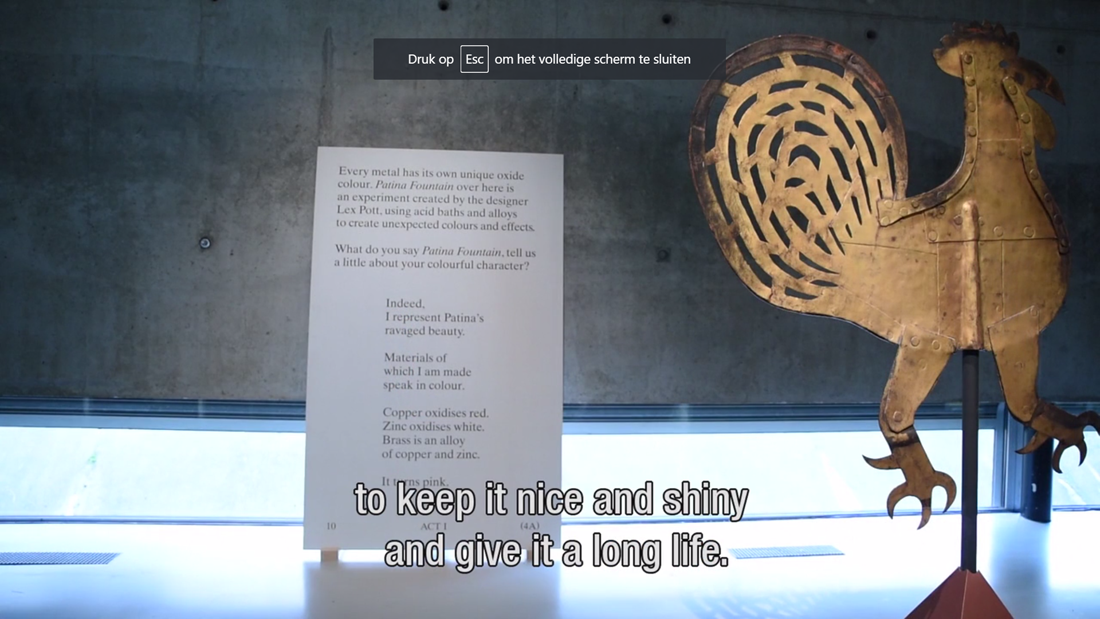Ten seconds of watching Arttube’s video about the Designing the Surface-exhibition (posted on the website of het Nieuwe Instituut), brings you Chris Kabel, “concept and curator”, saying the following:
Although just having visited the exhibition, I did not remember seeing a thickset, usually extremely large, nearly hairless, herbivorous mammal (family Elephantidae, the elephant family) that has a snout elongated into a muscular trunk and two incisors in the upper jaw developed especially in the male into long ivory tusks, [x] at all.
I started doubting if I had seen the same exhibition he was talking about but looking at the video we pretty surely had. But also on the screen (see above) there is no elephant to be seen. Maybe the zoo (or, so called fun fair)
is too big for the elephant to be found? Impossible. Kabel even mentions giving the elephant centre stage,
so it must not be too hard to find this “elephant.” What is really meant with the elephant in the room,
an obvious major problem or issue that people avoid discussing or acknowledging [x]
is the surface in design: apperently ‘avoided’ (as quoted above) or ‘ignored’ (Chris Kabel), en therefore in Designing the Surface, put in the centre of the room. Also should be to be found in one of the two other animals in the room: the golden cockerel.
The golden cockerel might be a bit rare – it’s one out of the three animals (an elephant, a zebra and a cockerel) n the zoo – it is one of the first objects to be seen and written about:
ACT I PATINA: How does the fate of a golden cockerel and his companions intertwine with that of the tormented tale of two fountains, the first crafted from copper and the second one built from brass?
All to be found in a zoo perhaps? Or in the near surroundings of a church?
Gold-plated weathercock, lent by Museum de Roode Tooren, is a weathercock like any other apart from the fact that it’s gold-plated, and therefore it doesn’t lose its shine.
Normally sitting on the church’s tower in Doesburg, shining bright and golden, the weathercock is certainly put in central view. And now put on the ground, looking at it from closer by, we are obviously not looking at the rotting wooden cockerel inside, but at the shiny golden elephant.
Gold-plated weathercock. Museum de Rode toren. exh.cat.no2-patina




